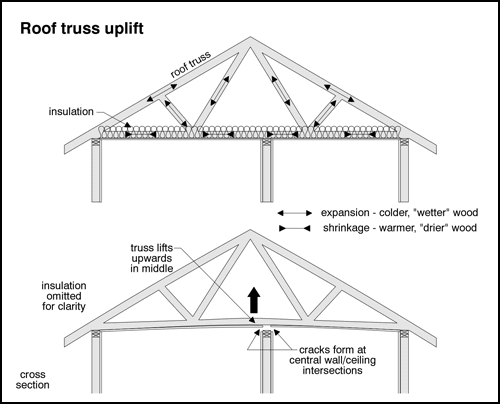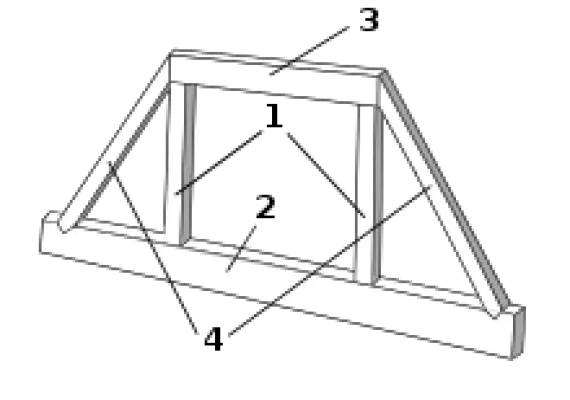Zero Force Members | How to Identify Zero Force Members in Trusses
Zero Force Members | How to Identify Zero Force Members in Trusses
What is Zero Force Members
A zero-force member can be defined as a structural member (a single truss segment) in a truss structure that, when the load is applied to the structure, is at rest (no tension or compression forces). Zero force members are members in a truss/frame that theoretically have no force in them.
A zero force member in civil engineering is a member (a single truss component) of a truss that, given a specified load, is at rest: neither in tension nor in compression.
A zero force member is frequently encountered in a truss at pins (any connections within the truss) where no external load is applied and three or fewer truss members meet. Analyzing the forces applied on an individual pin in a physical system can be used to identify basic zero force members.
Zero Force Members Identifications
These members in trusses are typically found at pins where no external load is applied, and three or fewer truss members meet. Identification of basic zero force members can be made by analyzing the forces acting on an individual pin in a physical system.
When an external force or moment applied to the member, then it means the members attached to that member are not zero-force members unless the external force acts in a manner that fulfils one of the following conditions:
- If two non-collinear members meet in an unloaded joint, both are zero-force members.
- If three members meet in an unloaded joint of which two are collinear/parallel, then the third member is a zero-force member.
Reasons for Zero-Force Members in a Truss System
- Zero force members contribute to the stability of the structure, by providing buckling prevention for long slender members under compressive forces
- Zero force members can carry loads if variations are introduced in the normal external loading configuration
- Zero force members are used to increase the truss’s stability and rigidity, as well as to support a variety of loading circumstances.
In summary for a truss joint with two non-collinear (not at the same line) members only with no external force.
Given that two collinear members, the third member, will be a zero force member. Identifying zero force members will save the time and effort required to analyze a given truss. Also, it will simplify the analysis by eliminating zero-force members.
How To Identify Zero Force Members in Trusses
What is the fastest way to identify zero force members?
Case 1: In the case of a two-member joint, if the members are not parallel and there are no other external loads (or reactions) at the joint, both of those members are zero force members.
Case 2: In a three-member joint, if two of the members are parallel and there are no other external loads (or reactions) at the joint, the third member is a zero-force member.


